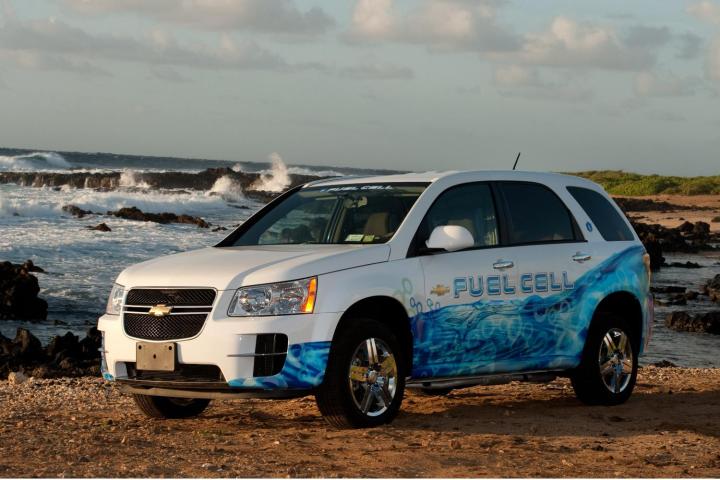
Seemingly everyday marks a new milestone in hydrogen powered cars. Today’s milestone is a literal one because one of GM’s fuel cell research vehicles – a specially fitted Fuel Cell Equinox – has just reached 100,000 miles of real world driving.
The car began its life as a fleet vehicle at Walt Disney’s Burbank studio as part of GM’s Project Driveway. During this magical time of ferrying around assistant producers and C-List celebrities – the only Hollywood folk how would be willingly seen in an Equinox – the car accumulated many of its 100,000 miles.
Following the end of this project the car became the runabout and engineering development vehicle for a group of GM Engineers. Cue many more hours stuck in LA traffic.
So why is this boring car with its boring history as a fleet vehicle worth reading – let alone writing about?
Because hydrogen has been plagued by questions. And this boring Equinox answers one of them. Hydrogen drivetrains can last, and they can offer reliable real world driving. GM’s fleet of hydrogen fuel cell vehicles is now approaching a total of nearly three million miles of test and street driving. This is far more than other manufacturers and represents a major stride in developing practical fuel cell technology.
GM happily points out that this astounding mileage total has saved 157,894 gallons of gasoline at a cost savings of over $500,000.
Unfortunately, despite partnering with both Honda and the U.S. military, GM still can’t quite answer where the hydrogen for fuel cell vehicles will come from. Or what the hydrogen will actually cost. Presently, hydrogen is made from natural gas. It is both cleaner and more efficient to turn natural gas into hydrogen than it is to simply use it as an energy source.
This next big hurdle for hydrogen vehicles may be out of the hands of automakers. While large companies like GM can absolutely invest in new methods of hydrogen production, the problem is similar to an EV maker trying to fix a local power grid. It’s simply not in its realm of expertise.
Regardless of whether it is automakers or others who push forward hydrogen technology; the viability of the technology and the fuel are about to be put to the test. Several manufacturers, including Hyundai and Toyota are set to release consumer hydrogen cars.
Editors' Recommendations
- Hyundai’s hydrogen fuel cell truck makes hauling freight green and glamorous
- Hydrogen was the fuel of tomorrow, so what happened?
- Toyota uses hydrogen fuel cells to power one of its Japanese factories
- Hyundai Nexo is the first fuel-cell vehicle crash-tested by the IIHS
- BMW may finally be ready to sell hydrogen fuel cell cars to the public


